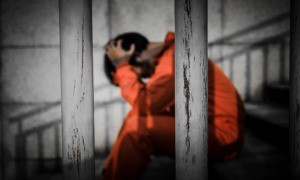***We posted a long piece earlier this week about a juvenile justice case – New Mexico v. Rudy B. – that might make its way up to the U.S. Supreme Court, which against all expectations appears to be the federal branch most interested in JJ policy. Like this year’s Graham v. Florida ruling, the ramifications of a high court decision in the case will be significant but highly localized.
Not so, perhaps, for J.D.B. v. North Carolina, the juvenile-related case that the high court recently agreed to hear. The question in the case is, should juveniles who are questioned on school grounds about crimes, either by police or school officials, be informed of their Miranda rights? In other words, does an interrogation in school qualify as “in custody?”
JJ Today spoke with one former juvenile public defender, who said the nexus of school and law enforcement is a serious gray area that has long needed some judicial guidelines.
Questionable interrogations of juveniles in school are “frequent enough that it doesn’t surprise me when it happens,” said Jorge Rodriguez, who spent 13 years as a juvenile public defender in Indianapolis. “We see the police using the school as an access avenue to a kid without their parents.”
Indiana requires a parent to be present in order for anything a juvenile says to be admissible in a court proceeding. So what typically happens, according to Rodriguez, is the cop will sit in the corner while the principal questions the student.
If the student gives it up, Rodriguez said, he usually assumes that’s it, and will also confess later with his parents in the room. “They don’t understand that the first admission is not usable against them.”
It will be really interesting to see what sort of briefs are filed on either side of this one. It should get plenty of attention from law enforcement advocates, since we are talking about youth who committed a crime and the possibility of making it harder to solve those crimes. But if what Rodriguez observes in Indy is true of other jurisdictions, it seems like the rules need more clarification.
“I’ve seen situations where, clearly to me, [law enforcement] are using school officials and setting to circumvent the law, knowing they can’t do it directly,” Rodriguez said.
***Marc Schindler, who was replaced as director of D.C.’s juvenile justice system this summer, was brought on as a partner at D.C.-based Venture Philanthropy Partners. Schindler will oversee VPP’s socialCONNECT initiative, which has a goal of connecting 20,000 area youths with education and job opportunities over the next five years.
The project is funded in part by the federal Social Innovation Fund at the Corporation for National and Community Services. Proposals are due Nov. 30 to VPP from the potential partners on this, and winners will be announced in late January.
***Interesting reads:
-Tracy Overstreet of Nebraska’s Grand Island Independent reports on a juvenile attention center that is failing in Hall County. The story cuts to a common challenge for such ventures, designed to hold juveniles until family can collect them: consistent staffing. It is hard for a municipal government to rationalize regular staffing for something that can go unused for days, particularly in the current economic climate.
But in Hall County, police essentially gave up on the program because there was never someone on call when they needed to park a juvenile for awhile. Instead, the juveniles are taken to Lincoln to wait for their family in detention, which is not what anyone wants policy-wise and costs the police transportation time and resources.
Just our two cents, but it seems like outsourcing the attention center to a youth services provider might make sense. Then again, most youth programs aren’t open at night, so the same issues might come into play.
-Historically black college Florida A&M University has opened the Juvenile Justice Research Institute (JJRI). The institute was started with funding secured by the state from the Department of Justice and from its own state juvenile justice advisory group.
-The Juvenile Justice Project of Louisiana, led by Dana Kaplan, issued a report this week that says Louisiana’s Swanson Center for Youth is no better than it was before the state took on reform of its juvenile justice system. Other juvenile facilities have been closed or improved, the report says, but Swanson (which handles about half of the average 400 youth in secure care) still remains oversized and under-staffed, which is dangerous for staff and unproductive for youth.
–Oklahoma juvenile justice director Gene Christian needs a raise to keep his employees from leaving for other state agencies, he told Oklahoman reporter John Estus. The reason: the salary of Oklahoma state employees is partially tied to the salary for the agency director they work for. And because Christian’s is lower than directors at other agencies, some employees who would otherwise stay are jumping for similar positions at other offices where the director salary dictates higher pay. Someone clue JJ Today in here: Is that standard practice in state hierarchy, or is Oklahoma unique in this pay structure?
***Condolences to the family and friends of 16 people who were killed and the 20 who were badly injured during an accidental fire at a juvenile facility in El Salvador.





























